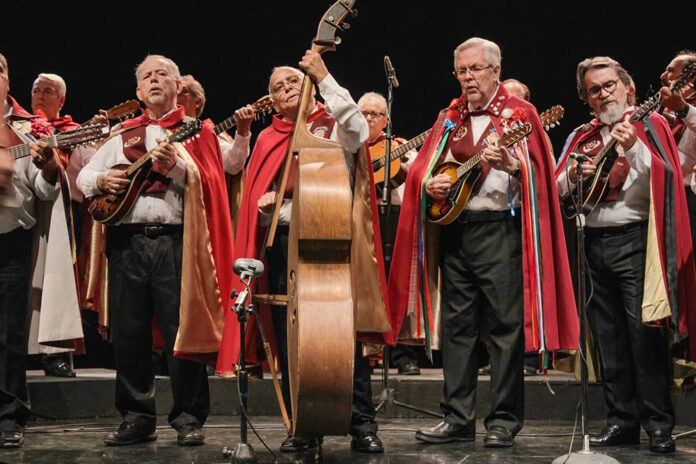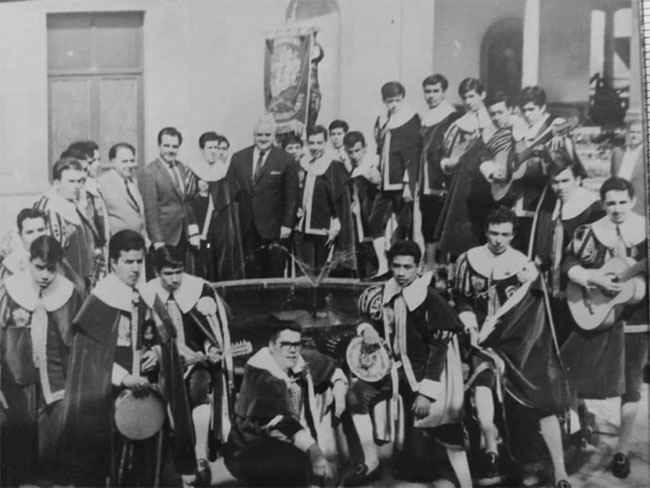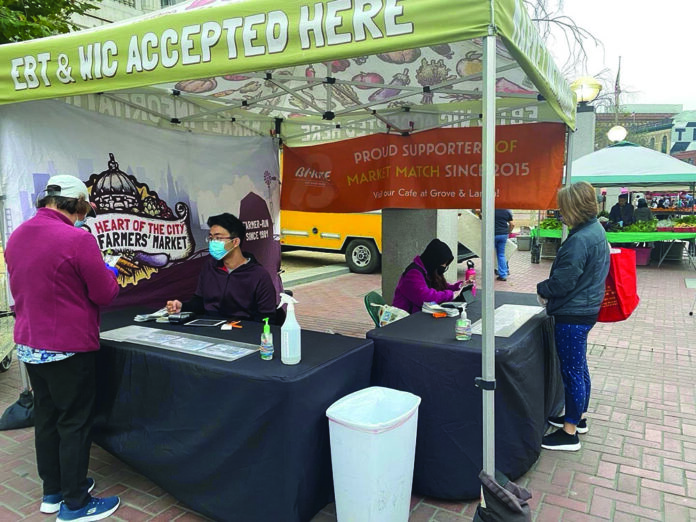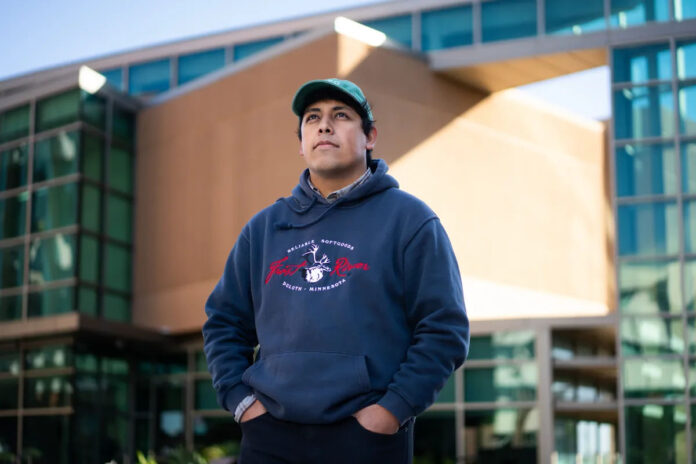California’s community colleges are reporting a rise in financial aid fraud. In January, suspected bots represented 1 in 4 college applicants. Schools have given away millions to these scams, and college officials say fraudsters are getting smarter with the help of AI
by Adam Echelman
They’re called “Pell runners” — after enrolling at a community college they apply for a federal Pell grant, collect as much as $7,400, then vanish.
Since fall 2021, California’s community colleges have given more than $5 million to Pell runners, according to monthly reports they sent to the California Community Colleges Chancellor’s Office. Colleges also report they’ve given nearly $1.5 million in state and local aid to these scammers.
The chancellor’s office began requiring the state’s 116 community colleges to submit these reports three years ago, after fraud cases surged.
At the time, the office said it suspected 20 percent of college applicants were fraudulent. Because of the COVID-19 pandemic, the federal government loosened some restrictions around financial aid, making it easier for students to prove they were eligible, and provided special one-time grants to help keep them enrolled. Once these pandemic-era exceptions ended in 2023 and some classes returned to in-person instruction, college officials said they expected fraud to subside.
It hasn’t. In January, the chancellor’s office suspected 25 percent of college applicants were fraudulent, said Paul Feist, a spokesperson for the office.
“This is getting significantly worse,” said Todd Coston, an associate vice chancellor with the Kern Community College District. He said that last year, “something changed and all of a sudden everything spiked like crazy.”
Online classes that historically don’t fill up were suddenly overwhelmed with students — a sign that many of them might be fake — Coston said. Administrators at other large districts, including the Los Rios Community College District in Sacramento, the Mt. San Antonio Community College District in Walnut, California and the Los Angeles Community College District, told CalMatters that fraudsters are evading each new cybersecurity strategy.
The reason for the reported increase in fraud is because the chancellor’s office and college administrators are getting better at detecting it, he said. Since 2022, the state has allocated more than $125 million for fraud detection, cybersecurity and other changes in the online application process at community colleges.
The reports the colleges submitted don’t include how much fraud they prevented.
The rise in suspected fraud coincides with years of efforts, both at the state and local level, to increase access to community college. Schools are reducing fees — or making college free — while legislators have worked to simplify and expand financial aid. Those efforts accelerated during the pandemic, when community colleges saw record declines in enrollment.
It’s not surprising, then, that “bad actors” would take advantage of the system’s good intentions, Feist said.
Financial aid fraud is not new
College officials suspect most of the fake students are bots and often, they display tell-tale signs. In Sacramento, community colleges started seeing an influx of applications from Russia, China, and India during the start of the pandemic. Around the same time, administrators at Mt. San Antonio College saw students using Social Security numbers of retirees. Others had home addresses that were abandoned lots. Uncommon email domains, such as AOL.com, were another red flag.
These scams aren’t new. The federal government has long required colleges to report instances of financial aid fraud. Every year, the federal government closes around 40 to 80 cases, including a recent conviction of three California women who stole nearly a million dollars by collecting fraudulent student loans. California community colleges also say they’ve spotted fraudulent applications from people trying to get an .edu email address in order to receive student discounts.
When the chancellor’s office began requiring community colleges to file monthly reports, it asked for the number of fake applications and the amount of money they gave to fraudsters.
CalMatters submitted a public records request for the data, broken down by campus. After the request was initially rejected, CalMatters appealed and received an anonymized copy of all of the monthly reports, lacking individual campus details.
The reports show that between September 2021 and January 2024, the colleges received roughly 900,000 fraudulent college applications and gave fraudsters more than $5 million in federal aid, as well as nearly $1.5 million in state and local aid.
The numbers show that fraud represents less than 1 percent of the total amount of financial aid awarded to community college students in the same time period. It’s hard to tell how accurate the data is because compliance is spotty, with some months missing reports from as many as half the colleges.
More fraud, in more places
To understand how fraud is evolving, the chancellor’s office uses several sources of information and data, Feist said. One indicator is an atypical bump in applications.
“If I saw, for example, that a college that only gets 1,000 applications in some time frame gets 5,000, you kind of know something is probably up,” said Valerie Lundy-Wagner, a vice chancellor for the community college system.
The chancellor’s office provided CalMatters with anonymous application data for each month from September 2021 to January 2024. CalMatters analyzed the data using two different techniques to identify statistical outliers in the application data and asked the office to verify the methodology. The office repeatedly declined.
According to the analysis, more than 50 of the state’s 116 community colleges saw at least one unusual spike in the number of applications they received during that time frame. In the last year, colleges have seen more unusual spikes than at any point since 2021. Along with fraud, however, outliers could also reflect normal fluctuations in applications or the overall increase in college enrollment last year.
“What we’re hearing is that (fraud) is happening more widespread than people are letting on, but people just have their heads in the sand because it looks good to have your enrollment going up,” said Coston with the Kern Community College District. Many college administrators say improvements in artificial intelligence have made it easier for people to attempt fraud on a larger scale.
Yet clamping down too hard on fraud can have unintended consequences. More than 20 percent of community college students in California don’t receive Pell grants they’re eligible for. Administrative hurdles — including the verification process — are one reason why, according to a 2018 study by researchers at UC Davis. To help, the federal government is trying to simplify its financial aid application, but in some cases, it’s created more barriers for students during the rollout this year.
“We’ve overcorrected at times, even in policy, and in how stringently we’re verifying students relative to the amount of fraud in the system,” said Jake Brymer, a deputy director with the California Student Aid Commission. As a result, he said, real low-income students get pushed out.
Kicking real students out of class
Sometimes, the fraud detection backfires on actual students, ousting people like Martin Romero.
In order to graduate from East Los Angeles College, Romero, 20, must take American history, so last fall he enrolled in an online class where students can watch pre-recorded lectures on their own time.
He said it’s all he had time for. Romero takes four classes at East Los Angeles College each semester and serves as its student body president. He also helps out at his family’s auto body shop, sometimes as much as 15 hours a week.
On the first day of class last fall, he said the online portal, Canvas, wasn’t working on his computer.
That day, the American history professor did a test through Canvas, asking students to respond to a prompt in order to prove they were not a bot. Romero didn’t answer, so the professor dropped him from the class.
“I was freaking out,” he said, and wrote to the professor as soon as he found out, begging to be reinstated. The professor told him the class was already full again, so letting him in would mean kicking someone else out.
For the college’s Academic Senate, the faculty group that governs academic matters, fake students is one of the top three issues, said its president, Leticia Barajas.
“We’re frustrated with the fact that some of these courses are getting filled really quickly,” she said. “We see it as an access issue for our students.”
She said there’s been an uptick in recent months, especially in certain kinds of online classes, that has forced professors to focus on hunting bots instead of teaching. Professors now are expected to test their students in the first weeks, asking them to submit answers to prompts, sign copies of the syllabus, or send other evidence to prove they are real.
Increasingly, she said, the bots are evading detection, especially with the help of AI. “They’re submitting assignments. It’s gibberish,” she said.
The endless, multi-million dollar game of combating fraud
Campus and state officials described fraud detection as a game of whack-a-mole. “When we get better at addressing one thing, something else pops up,” said Lundy-Wagner. “That’s sort of the nature of fraud.”
To fight fraud, she said, the chancellor’s office, the 73 independently governed districts and their colleges all must work together, including those who oversee information technology, enrollment and financial aid. Part of the challenge is that the system is so “decentralized,” she said.
The largest reform underway is a new version of CCCApply, the state’s community college application portal, which will offer more cybersecurity, Feist said. He also said there are other “promising” short-term projects.
One of them, a software tool known as ID.Me, launched in February. The contract with the software company, costing more than $3.5 million, gives it permission to check college applicants for identification, including video interviews in certain cases. Privacy experts have warned that the company’s video technology could be racially biased and error-prone.
To mitigate these privacy concerns and avoid creating enrollment barriers, applicants need to opt in to the new verification software.
In the first few days after its implementation, 29 percent of applicants opted in to ID.Me’s new vetting process. Some applicants started the verification process but never finished, said Feist, while others are ineligible because they’re under the age of 18. The rest chose not to verify their identity for other reasons, including many who are suspected bots.
‘We’re just trying to survive’
In Los Angeles, community colleges have already seen a drop in suspicious applications, said Nicole Albo-Lopez, a vice chancellor with the district. But she’s skeptical the problem is solved. “The lull we see, I don’t believe we’ll be able to sustain,” she said. “They’ll find another way to come in.”
Her district is now concerned that bots are trying to steal data or intellectual property, not just financial aid. “Say I have 400 sections of English 101 online. There are 400 variations of readings, assignments, peer-to-peer questions that somebody can go in and scrape,” Albo-Lopez said.
Barajas said faculty at East Los Angeles College are so overwhelmed by bots they haven’t discussed the potential risk to their intellectual property: “We’re at such a level where we’re just trying to survive.”
Meanwhile, students like Romero who are wrongly mistaken for bots must develop their own survival skills. When the professor denied the request to re-enroll, he signed up for the same course in the one format that was still available — in-person. The class met every Monday and Wednesday at 7:10 a.m., and the professor deducted points for anyone who was late.
“It was torture,” he said, noting that he missed two classes and was late to around four. He finished the class with a B but said he would have had an A if he had gotten into the class he wanted.
As student body president, he said he’s been outspoken about the issue. While he was able to fulfill his history requirement, he worries that other students may not be so lucky.
Data reporter Erica Yee contributed to this reporting.
Adam Echelman covers California’s community colleges in partnership with Open Campus, a nonprofit newsroom focused on higher education.











